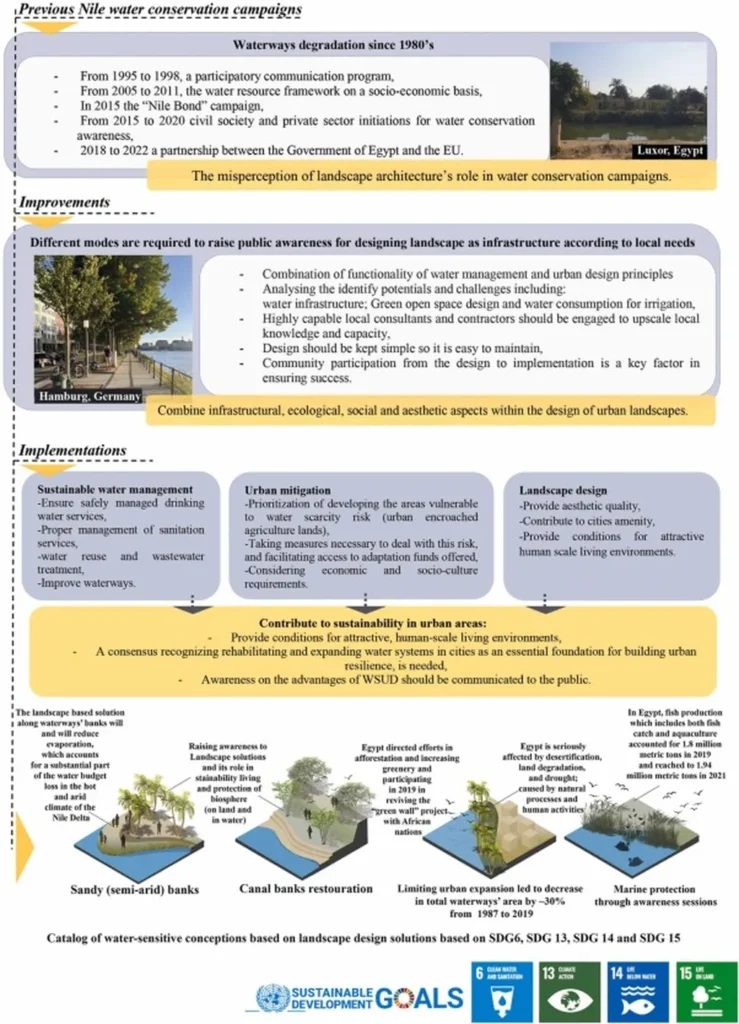In the arid landscapes of Upper Egypt, where the Eocene Limestone plateau meets the new floodplain, a silent environmental crisis is unfolding. The West Sohag site, a wastewater disposal plant operational since 1990, is leaking contaminants into the groundwater, posing significant environmental and health risks. A recent study published in the journal *Scientific Reports* (translated to English as “Scientific Reports”), led by Shaymaa Rizk from the Geology Department at Sohag University, sheds light on the severity of this issue and its potential implications for the energy sector.
The study employs remote sensing and geochemical techniques to assess the environmental impact of the sewage water treatment plants in the Sohag Governorate. Rizk and her team found that the contaminated areas have substantially increased over time, with the region classified into four main categories: urban centers, agricultural areas, water courses, and barren lands. “The area is struggling to accommodate the projected quantities of wastewater,” Rizk notes, highlighting a critical infrastructure challenge.
One of the most alarming findings is the accumulation of raw wastewater on the ground surface, forming large, uncontrolled ponds. These ponds not only pose a risk to the ecosystem but also have the potential for catastrophic health consequences due to chemical and bacterial contamination of soil, crops, and water supplies. The study reveals that the average heavy metal concentrations in the analyzed groundwater follow a descending order: zinc (Zn) > copper (Cu) > lead (Pb) > cadmium (Cd), with mean values of 8.55, 0.421, 0.282, and 0.207 ppm, respectively.
The correlations between these heavy metals in the water are strikingly high, with correlation coefficients greater than 0.8 between pairs such as Pb & Cd, Pb & Cu, Pb & Zn, Cd & Cu, Cd & Zn, and Cu & Zn. This high correlation suggests a common source or similar behavior of these metals in the environment. Speciation analysis further indicates that Zn, Cu, Pb, and Cd are highly mobile metals in the study area, meaning they can easily move through the soil and water, increasing the risk of contamination.
The implications of this research extend beyond environmental concerns. For the energy sector, understanding the transport properties of heavy metal contaminants is crucial for developing practical remediation strategies. As Rizk explains, “Our findings confirmed the occurrence of sewage water leaking into the groundwater aquifer in the study area. These results offer useful data for examining the transport properties of heavy metal contaminants and developing practical remediation strategies.”
The study’s findings underscore the need for improved wastewater management practices and infrastructure. As the demand for water increases, particularly in arid regions, the pressure on existing wastewater treatment facilities will only grow. This research serves as a wake-up call for policymakers, engineers, and environmental scientists to collaborate on solutions that can mitigate the environmental hazards associated with wastewater disposal.
In the broader context, the study highlights the importance of integrating remote sensing and geochemical techniques in environmental monitoring. These tools can provide valuable insights into the dynamics of contaminant transport and help in the development of targeted remediation strategies. As the world grapples with the challenges of climate change and resource scarcity, such interdisciplinary approaches will be essential for ensuring sustainable development.
The research conducted by Rizk and her team is a significant step forward in understanding the environmental impact of wastewater disposal. It provides a foundation for future studies and practical applications that can help protect groundwater resources and ensure the health and safety of communities. As the energy sector continues to evolve, the insights gained from this research will be invaluable in shaping policies and practices that promote environmental sustainability and public health.

